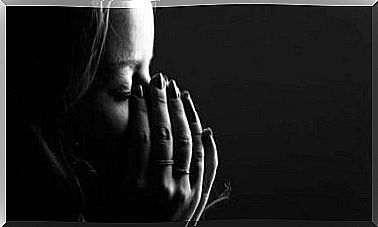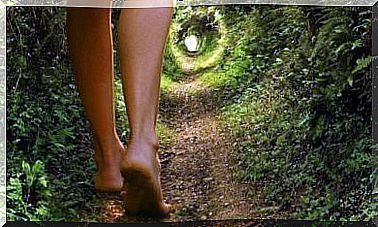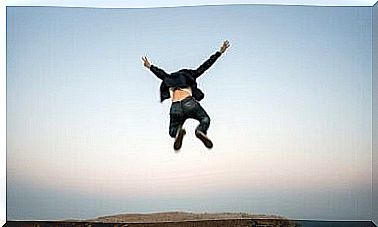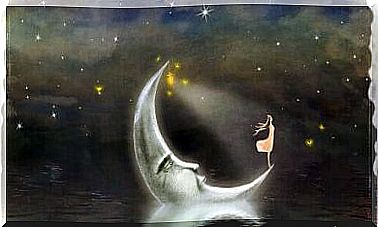Greeting To The Sun: Introduction To Hatha Yoga
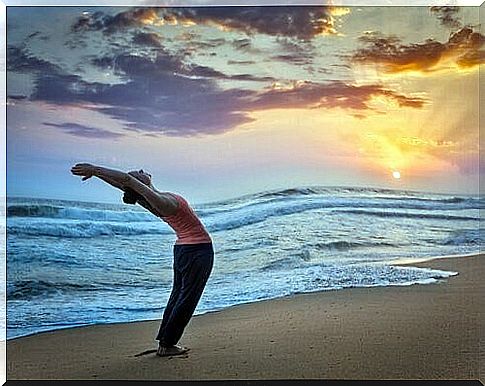
The sun salutation, or Surya namaskar , is a fundamental part of the practice of Hatha yoga. It is a sequence of 12 movements synchronized to the rhythm of breathing. It is usually the first exercise that is taught to those starting this discipline. Moreover, it is so popular that there are several variations.
It is a circular series of movements that begin and end with the same position. Some yoga enthusiasts believe that the sun represents the physical and spiritual heart of the world, so the sun salutation can be understood as a way of thanking him for the new day full of light.
We recommend practicing the sun salutation as a daily ritual, as it is a great way to wake up full of energy and excitement. Among the many benefits it brings, it helps to stretch the main muscle groups, as well as calming the mind.
There are many studies showing that this exercise improves the strength and flexibility of the body. Moreover, it is particularly good for respiratory and cardiovascular function, as well as reducing stress, anxiety, depression and chronic pain.
The sun salutation explained step by step
The sun salutation foresees that each position is opposed to the previous one, and the body is then stretched in a different way, first pushing the chest out and then in, in order to regulate the rhythm of breathing.
If done every day, this sequence of movements allows the spine and joints to gain enormous flexibility. Below, we see the steps to follow to carry out this exercise so complete for our body.
1- Namaskar
Start from the mountain position. The first step is to stand up straight with your feet together and your body relaxed. Inhale and exhale, keeping your hands folded at chest height, while applying light pressure with your thumb towards the breastbone.
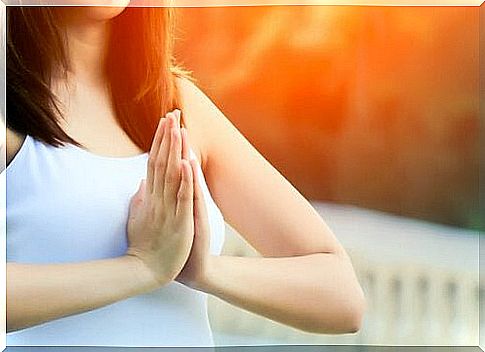
2- Urdhva hastasana
Continue to inhale as you stretch your arms upward. At the same time, straighten your back by pushing your hips forward. Remember that the hands must remain joined.

3- Uttanasana
Exhale as you bend forward ; then rest your head on your knees and stretch your hands until they touch the floor and feet. Try to push your hands as far as possible, within the limits of the flexibility of your body.
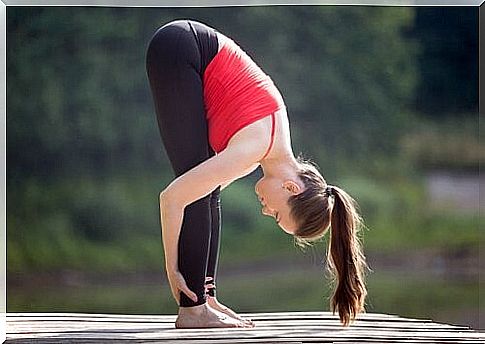
4- Ashwa sanchalasana
As you inhale, bring your left leg back and make sure the sole is firmly on the floor. Don’t forget to keep your head up and your back straight. The hands can be held up or touch the ground in this position.
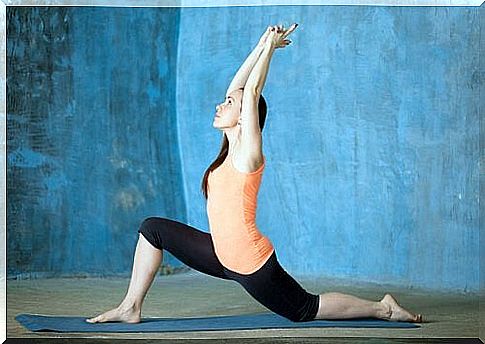
5- Chaturanga
To perform the fifth step, you must hold your breath and bring the other leg back as the arm extends. Don’t forget that the spine and legs must form a straight line. Before moving on to the next step, take a deep breath and contract your abs, holding the air for 2 seconds.
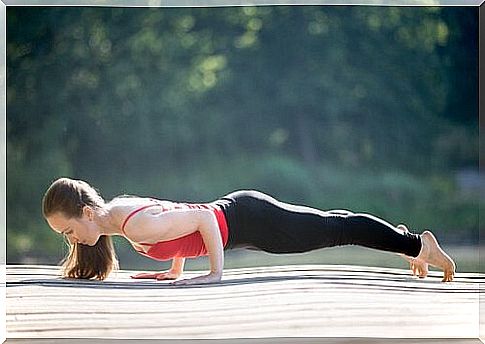
6- Chaturanga dandasana
Exhale as you bend your elbows and knees towards the ground. With your eyes facing the floor, let your body slide forward as you gently rest your chest against the floor.
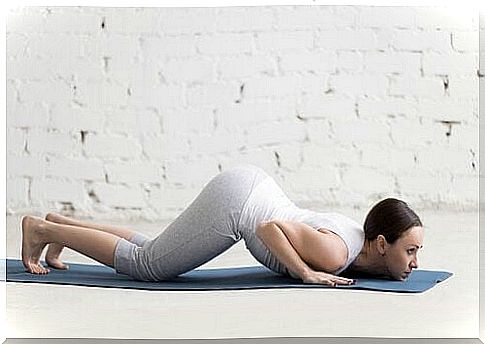
Inhale as you push your chest out. Arch your back back while keeping your arms outstretched. Raise your head while relaxing your legs stretched out on the ground.
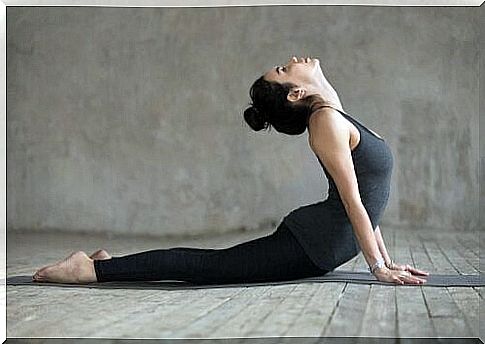
8- Adho mukha svanasana
Inhale as you push your body back. Then remain with the palms of your hands and the soles of your feet firmly on the ground. You should form a kind of triangle with the body.
Hold this position for a few seconds, then continue with the next step.
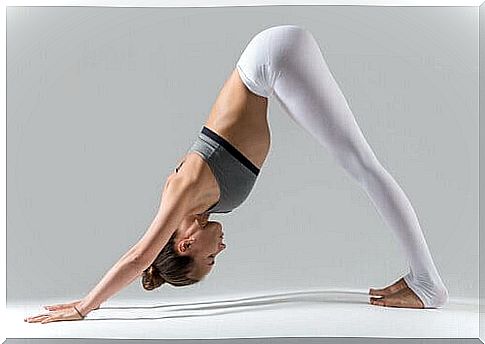
9- Ashwa sanchalanasana
Inhale and bring your left leg forward as you relax your back. This involves performing the same position described in step four.
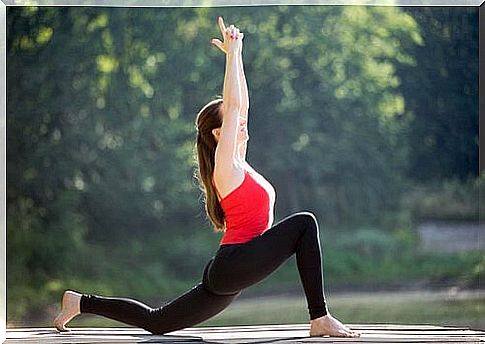
10-Uttanasana
Inhale as you bring your right leg forward and lift it off the ground. As in position 3, the knees must also be slightly bent here and the head must be between the knees. Extend your arms while placing your hands on the ground.
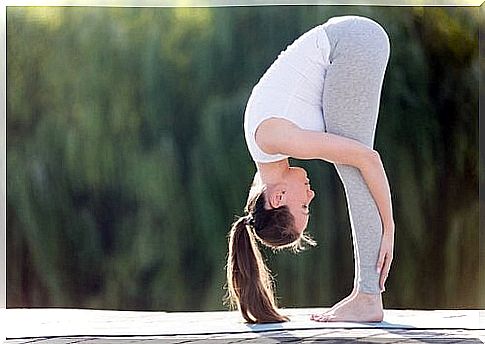
11- Urdhva hastasana
Inhale with your hands folded forward and stretch your arms upward over your head. Then, gently bend your back back, ending with a slightly arched position. This position is the same as in step two.
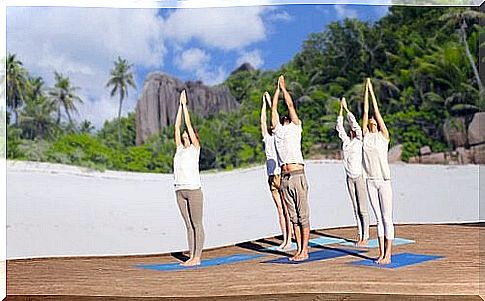
12.- Namaskar
Conclude the sun salutation cycle by bringing your hands clasped to your breastbone and adopting the first position of the exercise again. You can repeat the twelve postures as many times as you like to feel the energy pass through your body.

While it might seem complicated at first, the sun salutation is one of the simplest yoga exercises. Try to follow the instructions with the help of the images and you will see that in no time you will be able to perform this exercise correctly.

